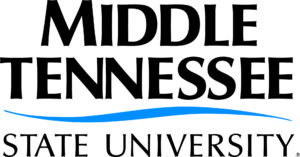As of July 1, 2017, Media Arts is the name of the former Department of Electronic Media Communication (EMC). The world and the department have changed a lot since Electronic Media Communication became the department’s name back in 2001. Today, MTSU’s Media Arts Department is the largest, oldest, and most comprehensive program for creative media production in the state and in the region.
To make the change, “Media Arts” was approved by the department’s faculty, the Dean of the College, the College Curriculum Committee, the University Curriculum Committee, the Provost, the University President, the Tennessee Board of Regents, and the Tennessee Higher Education Commission.
Long live Media Arts!
A brief history of the Media Arts, Electronic Media Communication, Radio-TV/Photography department
1962 – Photography begins being taught at MTSU by Professor Harold Baldwin.
1971 – Mass Communication classes begin at MTSU.
1988 – The Mass Communication Department becomes the School of Mass Communication.
1988 – The Department of Radio-TV/Photography (RATV) is formed from Radio, TV, and Photography programs. The new department has emphases in four areas:
- Broadcast Journalism
- Broadcast Production
- Broadcast Management
- Photography
1988 – A student cable television station was started in the Department of Radio-TV/Photography. Now known as MT10.
1989 – The Mass Communication Department becomes the College of Mass Communication.
1991 – The College of Mass Communication moves into the newly built John Bragg Mass Communication Building.
1991 – The Mobile Production Lab (MPL, also known as “the truck”) goes into service as for the Department of Radio-TV/Photography.
1992 – Digital Animation and Imaging sequence developed by Professor Marc Barr is added to the Department of Radio-TV/Photography. This is the first program of its type in the TBR and the region.
1993 – WNAR (We Need A Radio Station) student radio station started. Now known as WMTS.
1994-95 – WNAR changes call letters to WMTS.
2000 – Digital Media Communication sequence developed in the Department of Radio-TV/Photography. Later changes name to New Media Communication, and will change again in Fall 2017 to Interactive Media.
2001 – The Department of Radio-TV/Photography changes its name to Electronic Media Communication.
2011, Fall – A new HD Mobile Production Lab (MPL) goes into service in the Department of Electronic Media Communication. The new truck begins a legacy of an average of about thirty live productions manned exclusively by student crews each fall and spring semester.
2011 – EMC Productions is organized as a quasi-professional varsity team for live television production with Dr. Dennis Oneal as Executive Producer. A contract is signed with MTSU Athletics for EMC Productions to produce live broadcasts of football and basketball games. Many of the live broadcasts are aired on ESPN3.
2013 – EMC FIRST LOOK is launched as an annual showcase of the best student work from the past year at the Belcourt Theatre in Nashville.
2013, Spring – The Blue Spark Awards are born as an evolution of the SMARTI Awards, a media arts competition for Tennessee high school media arts students.
2014, January – The Baldwin Photographic Gallery opens in its new location funded by a gift from former Photography professor, Harold Baldwin. The first exhibit in the new space is Jerry Uelsman and Maggie Taylor. The opening coincides with the 50th anniversary of the gallery.
2015, Spring – The Photography program moves into newly remodeled facilities in the McFarland Building. The new facilities give the program space to modernize and install significant new digital facilities and more.
2015, Fall – Multimedia Journalism is moved from the EMC Department to the School of Journalism. 170 students and three faculty move with the program.
2015, Fall – The College name is changed from The College of Mass Communication to The College of Media and Entertainment.
2015, Fall – EMC receives approval to proceed with changing the name of the department.
2015, Fall – The EMC department receives approval to terminate its accreditation by ACEJMC, a journalism-focused accreditation body and establish alternate accreditation. This enables important new possibilities for the department’s students – including minors within the College.
2016, Fall – Animation becomes a freestanding B.S. degree and also establishes a formal minor in Animation.
July 2017 – Media Arts becomes the new name of the Electronic Media Communication department.
2017, Fall – Several important changes take place in the department:
- Video and Film Production becomes a freestanding B.S. degree.
- Interactive Media changes its name from New Media Communication and becomes a freestanding B.S. degree.
- Media Arts launches formal minors for four more programs: Video & Film Production, Interactive Media, Photography, Media Management

